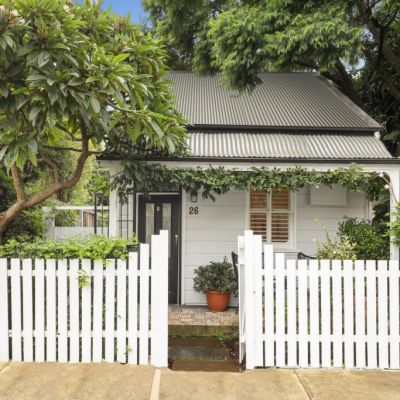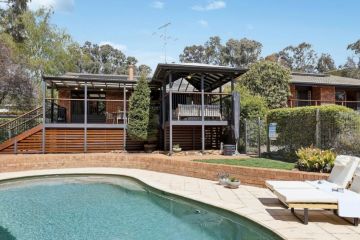The latest sign the housing boom is losing steam

More units than houses sold under the hammer in almost all major cities in February in another sign the housing boom is losing steam.
Affordability constraints and the return of investors meant clearance rates for units were higher than houses in Sydney, Brisbane, Adelaide and Canberra, according to Domain’s February auction report.

Melbourne was the only city to buck the trend, as house buying remained attractive due to more moderate house price growth at the same time it held the highest vacancy rate compared to other capitals.
But the property market was softening overall in the country’s two largest cities. Clearance rates continued to slide as a result of increased volumes and reduced competition, with Sydney and Melbourne clocking the highest number of homes scheduled to go to auction in February since Domain records began.
Sydney recorded a clearance rate of 68.4 per cent in February (down from 80.5 per cent for the same time last year), while Melbourne recorded a clearance rate of 69 per cent in February (down from 73.1 per cent a year ago).
Domain’s chief of research and economics Nicola Powell said it was a turning point in the Sydney property market in particular.
“What we’re seeing here is a solid data point to mark a turning point within the Sydney market,” she said.
“Not only have we got higher levels of homes, so much more choice for buyers and better buying conditions, we are also seeing softening of clearance rates, particularly we’ve got a turning point in units outperforming houses.”
Over the weekend, Sydney’s preliminary clearance rate reached 72 per cent, with agents reporting vendors setting more realistic reserves to meet the market. Meanwhile, 69 per cent of properties scheduled for auction in Melbourne sold under the hammer.
Melbourne buyers still preferred houses to units after a world-record lockdown, said Arch Staver, director and auctioneer at Nelson Alexander Fitzroy.

“No other city was locked up in our residence for such a long period of time like Melburnians were,” Mr Staver said. “That desire for an extra room, extra space, a garden was absolutely front of mind.”
At the same time, he said he could not recall another time with as many cranes building residential units in Melbourne’s inner-city suburbs.
“A buyer of a unit in Melbourne has never had so much to choose from. I’m not trying to say units are not a good purchase. [But] the pressure on rents is there.”
But in Sydney, where the gap between auction house prices and auction unit prices was $870,850, compared to Melbourne’s $475,000, buyers were driven to more affordable options.
“The housing market has risen so unbelievably the apartment market hasn’t caught up,” Damien Cooley, director and auctioneer of Cooley Auctions, said. “That’s why we’ll see apartments do better because, from an affordability point of view, people are looking for value and what they can afford.”
An extremely tight vacancy rate and the reopening of international borders meant units have become an attractive investment again, according to Thomas McGlynn, BresicWhitney’s chief executive.
Despite record auction volumes thanks to confident vendors listing their properties, their unrealistic reserves were holding back Sydney’s clearance rates, Mr McGlynn said.
“You’re at a point now where you have a little bit more choice. Buyers are reluctant to push past prices that have been recent sales.
“One of the biggest things holding back clearance rates for a month is directly linked to seller expectations, and once we get through this period where sellers start to realise we are now in a market that is operating in a much more fair and equitable way, I do expect the clearance rates to rise.”
Canberra recorded a clearance rate of 80.4 in February, down just 0.7 percentage points annually.
But units cleared at 83 per cent compared to 79.7 per cent of houses, a sign the cheaper property type has picked up in popularity not only for priced-out home buyers but also investors, according to Alec Brown, auctioneer for Ray White Canberra.
“The type of buyers active in the apartment market are either self-managed super fund investors or people who have built equity in their home in the past year,” Mr Brown said.
“So a lot of mum and dad investors are finding a way to invest in property opposed to traditional share markets or your long-term interest rate options by contrast.“
We recommend
States
Capital Cities
Capital Cities - Rentals
Popular Areas
Allhomes
More
/http%3A%2F%2Fprod.static9.net.au%2Ffs%2Fdd090c2c-2290-4c38-ac33-44225f9eaf4d)








